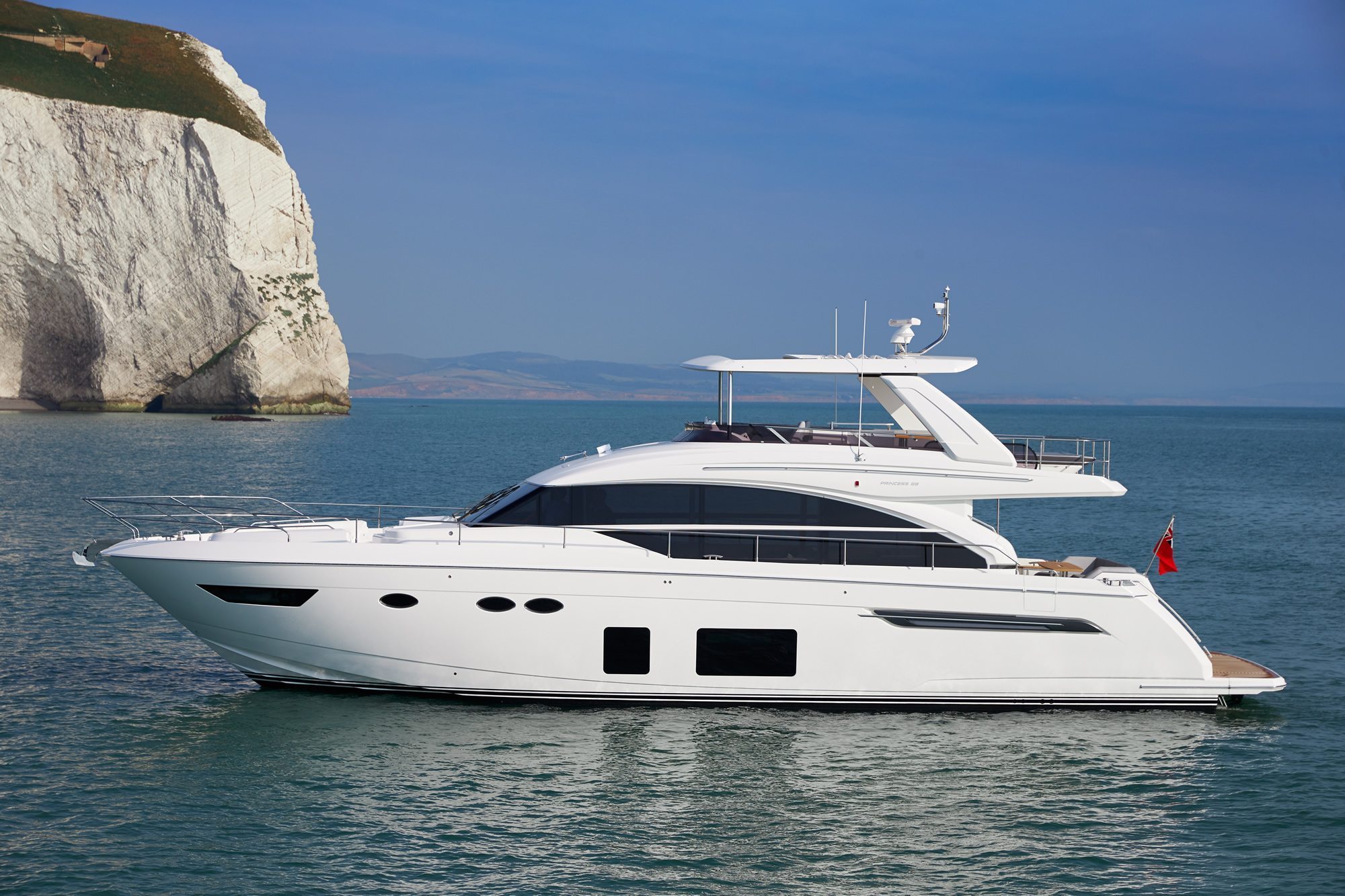

She may be a potent oceangoing craft but Ulysses is also a vessel of great opulence. Ulysses: The owner’s stateroom comes with its own office, bathroom and private dining area.

In fact, twin Caterpillar diesels and a 176,000-litre fuel tank mean she can cruise at 12 knots for 6,000 nautical miles non-stop – in other words, enough to cross the entire north Atlantic, from Britain to the U.S. With a bulbous subsurface profile allied to a relatively angled stem and flare-free hull sides, her cruising range is also radically improved. Up at the bow, in place of the broad, open suntraps so celebrated by the superyacht world, you get a boldly elevated structure with the massively raised freeboards of a serious offshore passage-maker. However, features of this kind can produce some unpleasant seakeeping traits (a slamming bow and exaggerated pitch and roll) that would prove ruinously painful for a long-distance skipper – so again, Ulysses adopts a more pleasing hybrid approach. Its frontal shape might also be rather bulbous and flat, allowing downward weight (rather than forward cleaving) to break through an ice sheet. A vessel specifically designed for such work tends to employ a reinforced bow, a vast reserve of low-end torque and a hull designed to minimise friction as broken ice rolls down the sides. Ulysses: Her bow features a boldly elevated structure in place of the normal luxury yacht sundecks.ĭespite her uncompromising external form, it would be wrong to describe this yacht as an icebreaker. In short, with a thick steel hull and tough, low-maintenance, corrosion-proof aluminium topsides, Ulysses is one of the most durable and resilient superyachts around. It offers outstanding resistance to impact and abrasion, plus great structural strength and easy, affordable repairs. However, it is also good to see that the builders have eschewed the fragile catwalk gloss of a fiberglass hull and opted instead for the heavyweight credentials of steel. These lightweight topsides therefore play a key part in improving composure during exposed offshore passages. This is of such importance because the vertical elevation of the craft’s five-tier design might easily have put too much weight up high, damaging the boat’s ability to recover from a heeling moment in lively seas. Murray Owen, MD of Marine Engineering Consultants ( ), was closely involved with the refit – and as he intimates, the combination of a steel hull and an aluminium superstructure was central to her success: ‘By replacing the steel superstructure with lighter aluminium, the GM (centre of gravity) was made lower, giving much greater stability.’ Ulysses: The retractable helipad is a useful asset. While some high-end yachts are built for island-hopping in the glamorous playgrounds of the Med or the Caribbean, this is a craft designed to shrug off oceanic swells and ice-strewn Arctic waters with the ease of a purpose-built commercial workhorse – and the Australian redesign obviously played a big part in making that happen. Named after the hero of Homer’s epic ‘Odyssey’, Ulysses exhibits an external form halfway between that of a military survey vessel and a commercial icebreaker. Ulysses: This steel and aluminium superyacht is a genuine transoceanic expedition craft It was an epic task costing around 30 million Australian dollars, but the boat that finally emerged in 2006 was a huge success, winning the Australian Refit of the Year Award and taking her place as one of the most capable Expedition Yachts money could buy. This involved no fewer than 200 people from 30 companies working to replace not just the entire superstructure but also 1,500 square metres of interior space. Originally commissioned by billionaire businessman, Graeme Hart, she was damaged by fire shortly before completion and then relocated to Brisbane for a two-year campaign of redesign, reconstruction and upgrade work. She also houses room for up to 9 crew members.Ulysses got off to a very unfortunate start on the high seas. Ulysses has a fuel capacity of 176,021 litres, and a water capacity of 31,797 litres. She is powered by a twin screw propulsion system. She is powered by a twin screw propulsion system Ulysses also features naval architecture by Trinity Yachts. Ulysses has a steel hull with an aluminium superstructure.Her exterior design is by Trinity Yachts. Ulysses measures 58.50 metres in length, with a max draft of 2.80 metres and a beam of 11.00 metres.

Speed, seaworthiness and unique quality workmanship characterise the American shipyard’s builds. Trinity Yachts, a world leader in the realm of building full-custom superyachts, has been producing first-class vessels since its inception in 1995. Ulysses is a custom motor yacht launched in 2003 by Trinity Yachts.


 0 kommentar(er)
0 kommentar(er)
